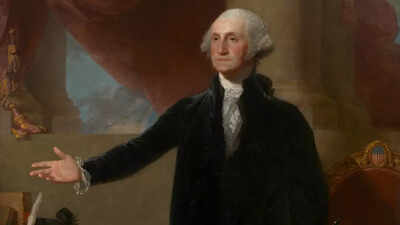
No nation is born overnight. The United States, often hailed as the torchbearer of liberty, was not the product of a single declaration or battlefield victory. It emerged from years of escalating grievances, ideological awakenings, and a growing conviction that tyranny could not coexist with freedom.
Long before the ink dried on the Declaration of Independence, colonial America had already entered a slow boil, socially, economically, and politically, one that would eventually explode into a full-scale revolution.To understand how the thirteen colonies stood against the might of the British Empire and carved out a sovereign identity, one must trace the timeline that binds protest, diplomacy, war, and constitution-building into the story of American independence.
Discontent in the colonies (1764–1774): The fuse is lit
The seeds of rebellion were sown not with muskets but with money. Britain's victory in the Seven Years' War had come at a price, and the Crown turned toward its colonies to help pay the debt. The result was a slew of unpopular taxation policies that disrupted colonial commerce and sparked unrest.
- 1764 – Sugar Act: Introduced duties on sugar and molasses, hurting colonial traders and igniting resistance.
- 1765 – Stamp Act: The first direct tax on printed materials led to widespread riots and the formation of the Stamp Act Congress.
- 1767 – Townshend Acts: Imposed tariffs on essential imports like glass and tea, prompting organized boycotts.
- 1770 – Boston Massacre: British troops fired into a hostile crowd, killing five civilians—a tragedy that galvanized anti-British sentiment.
- 1773 – Boston Tea Party: Colonists dumped 342 chests of tea into Boston Harbor in defiance of taxation without representation.
- 1774 – Coercive (Intolerable) Acts: Britain’s punitive response to the Tea Party shut down Boston Harbor and suspended Massachusetts’ self-government, pushing the colonies toward coordinated resistance.
By the time the First Continental Congress convened in 1774, a unified colonial identity was emerging—not yet American, but no longer British either.
Open rebellion (1775–1776): From protest to war
The gap between diplomacy and war narrowed with every British crackdown. What began as economic resistance soon transformed into an armed uprising.
- April 19, 1775 – Battles of Lexington and Concord: The first shots of the Revolutionary War echoed across Massachusetts. Though brief, these skirmishes signaled the death of reconciliation.
- May 10, 1775 – Second Continental Congress: Acting as a de facto government, it established the Continental Army and appointed George Washington as its commander.
- June 17, 1775 – Battle of Bunker Hill: Though a British tactical victory, the heavy casualties proved colonial fighters would not be easily subdued.
- January 1776 – ‘Common Sense’ by Thomas Paine: This fiery pamphlet made the case for complete independence, shifting public opinion and laying the intellectual foundation for revolution.
- July 4, 1776 – Declaration of Independence: Drafted by Thomas Jefferson, the document boldly declared that the colonies were no longer subjects, but a free and equal nation. Its adoption marked the formal birth of the United States.
War and diplomacy (1777–1781): Winning the unwinnable
Declaring independence was one thing; defending it was another. The fledgling nation faced starvation, mutiny, and military setbacks. Yet key victories and alliances gradually tipped the scales.
- October 1777 – Battle of Saratoga: This critical American victory persuaded France to join the war, turning a colonial rebellion into an international conflict.
- 1778 – Treaty of Alliance with France: French military and naval support proved decisive in multiple battles.
- 1780 – Treason of Benedict Arnold: A sobering moment in the war, Arnold's attempt to surrender West Point to the British revealed internal cracks.
- October 19, 1781 – Siege of Yorktown: In a coordinated assault with French forces, Washington trapped General Cornwallis, forcing his surrender and effectively ending major combat operations.
A fragile peace (1782–1789): From revolution to Republic
With the war ending, the question turned to governance. Could a nation built on defiance learn to govern itself?
- September 3, 1783 – Treaty of Paris: Britain formally recognized US independence, granting generous territorial boundaries and commercial rights.
- 1781–1788 – Articles of Confederation: As the first national framework, the Articles established a weak federal system, plagued by financial chaos and interstate disputes.
- May–September 1787 – Constitutional Convention: Alarmed by the dysfunction, delegates drafted a new Constitution balancing federal and state powers.
- June 21, 1788 – Constitution Ratified: Once nine of the thirteen states ratified the document, it became the law of the land.
- April 30, 1789 – George Washington Inaugurated: With his oath, the first President brought credibility and unity to a government still finding its footing.
The end of a war, the birth of a philosophy
The American Revolution was not merely a colonial revolt; it was a philosophical awakening. The idea that the government derived its legitimacy from the consent of the governed was radical in an age of monarchies. The revolution challenged the global status quo and inspired uprisings far beyond American borders.
Yet independence was not the final destination; it was the beginning of a difficult journey toward union, justice, and identity. The United States was born not from perfection, but from persistence.

 5 hours ago
51
5 hours ago
51




























 English (US)
English (US)